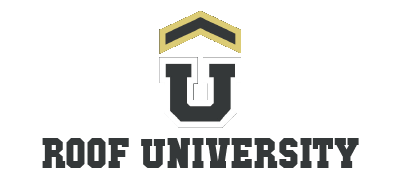Metal roofing for flat roofs is a durable and energy-efficient solution for homes and businesses. This article explores the two primary fastening systems—hidden and exposed fasteners—examining their benefits, drawbacks, and applications. Learn about cost differences, maintenance needs, and how to choose the best option for your flat roof. By understanding these systems, you can make an informed decision that suits your needs, budget, and aesthetic preferences.
Understanding Metal Roofing for Flat Roofs
Benefits of Metal Roofing
Metal roofing offers exceptional durability, often lasting 40 to 70 years with minimal maintenance. Materials like Galvalume steel and Kynar 500-coated panels resist corrosion and maintain their appearance in various climates. For example, in regions with high temperatures, metal roofing reflects sunlight, reducing cooling costs by up to 25%, as recognized by Energy Star ratings. Additionally, these roofs are eco-friendly, made from recyclable materials, and often qualify for LEED certification due to their sustainability.
Challenges of Flat Roofs
Flat roofs pose unique challenges, including water pooling and slower drainage, increasing the risk of leaks. Unlike sloped roofs, flat roofs demand high-performing materials like PVDF-coated panels to prevent damage from standing water. By choosing a durable fastening system, such as hidden fasteners, property owners can address these challenges and ensure long-term roof performance.
Hidden Fastener Systems: Key Features and Benefits
What Are Hidden Fastener Systems?
Hidden fastener systems, commonly found in standing seam metal roofs, feature raised seams that conceal fasteners beneath interlocking panels. These systems are designed for both functionality and aesthetics, creating a sleek, modern appearance ideal for residential and commercial properties. For example, homes in coastal areas often opt for hidden fasteners to resist saltwater corrosion.
Advantages of Hidden Fastener Systems
Hidden fastener systems provide unparalleled durability by protecting fasteners from environmental elements. This prevents issues like rust or loosening, common with exposed fasteners. Additionally, hidden fasteners improve weather resistance, helping the roof withstand heavy rain, snow, and high winds. A study by FM Approvals shows that standing seam systems can endure wind speeds exceeding 140 mph, making them ideal for hurricane-prone areas.
Disadvantages of Hidden Fastener Systems
Despite their advantages, hidden fastener systems are costlier. The materials and specialized installation process add to the expense, with prices ranging from $12 to $16 per square foot. However, this investment pays off in reduced maintenance costs and longer lifespan, often exceeding 50 years. Homeowners must weigh these long-term benefits against the higher upfront costs.
Exposed Fastener Systems: Key Features and Benefits
What Are Exposed Fastener Systems?
Exposed fastener systems use visible screws to secure metal panels directly to the roof deck. These systems are common in industrial and agricultural settings but are increasingly used in residential projects due to their affordability. Panels such as 5V Crimp or ribbed styles are popular choices for garages and sheds.
Advantages of Exposed Fastener Systems
The primary advantage of exposed fastener systems is their cost-effectiveness. At $5 to $8 per square foot, these systems are more budget-friendly than hidden fasteners. Installation is straightforward, requiring less labor and fewer specialized tools. For example, a small business owner could quickly install an exposed fastener roof to cover a storage unit or workshop without significant investment.
Disadvantages of Exposed Fastener Systems
Exposed fasteners are susceptible to wear from environmental exposure. Screws may loosen over time, creating gaps that allow water intrusion. Regular maintenance, including inspecting and tightening fasteners, is necessary to prevent leaks. Additionally, the industrial appearance of visible screws may not suit residential or commercial properties prioritizing aesthetics.
Comparing Hidden vs. Exposed Fastener Systems
Cost Comparison
Hidden fastener systems have higher initial costs, but their durability reduces long-term expenses. In contrast, exposed systems offer lower upfront costs but require ongoing maintenance. For instance, a homeowner choosing a hidden system may save on repairs over decades, while an exposed system could need screw replacements every few years.
Maintenance and Longevity
Hidden fasteners protect against common issues like rust and loosening, offering superior longevity. Exposed systems demand more frequent inspections to address potential leaks. According to ASTM standards, hidden systems often exceed the minimum performance requirements for weather resistance, making them a reliable choice for flat roofs.
Aesthetics and Applications
Hidden fasteners provide a clean, uninterrupted look, making them ideal for modern homes or office buildings. In contrast, exposed fasteners are better suited for industrial or agricultural applications where appearance is secondary. For example, a warehouse may prioritize functionality over aesthetics and opt for an exposed fastener system.
Weather Resistance
Hidden fastener systems outperform exposed systems in weather resistance, especially in climates with heavy rainfall or strong winds. The concealed design prevents water penetration and wind uplift, meeting rigorous standards set by organizations like UL.
How to Choose the Right Fastener System
Factors to Consider
When selecting a fastening system, consider your budget, climate, and aesthetic preferences. For example, a homeowner in Florida might prioritize weather resistance and invest in a hidden fastener system, while a small business owner in Arizona may opt for the cost-saving benefits of an exposed system.
Consulting with a Roofing Expert
Professional guidance ensures the chosen system meets performance and aesthetic goals. Certified contractors can recommend materials like Galvalume or PVDF-coated panels, tailored to specific needs. Proper installation by experienced roofers enhances the longevity and functionality of the roof.
Frequently Asked Questions
- Can exposed fastener systems last as long as hidden systems?
Hidden systems generally last longer due to reduced exposure to elements. - What are the maintenance requirements for each system?
Hidden systems need minimal maintenance, while exposed systems require regular inspections and screw tightening. - Are hidden fastener systems worth the higher cost?
Yes, especially in harsh climates or for properties prioritizing aesthetics and durability.
Conclusion
Choosing between hidden and exposed fastener systems depends on factors like budget, climate, and aesthetic goals. Hidden systems offer superior durability, weather resistance, and aesthetics, while exposed systems are more affordable and easier to install. By understanding the strengths and weaknesses of each system, property owners can make informed decisions that suit their needs. Whether you’re upgrading your home or installing a roof for a business, consulting a roofing professional ensures optimal results and long-lasting performance.
Parks
Matt is Five Points Roofing's VP of Business Development, directly in charge of company growth and building a true contracting brand that is trusted by millions of homeowners. It’s not all business for Matt though, being 6’5”, he’s an avid amateur beach volleyball player and golfer. Competition is his thing. Happily married to his wife Laura, they also have a giant 72 pound ex-racing greyhound that’ll run laps around you.
Roof University is the place if you're a roofer, property owner, or insurance adjuster.
